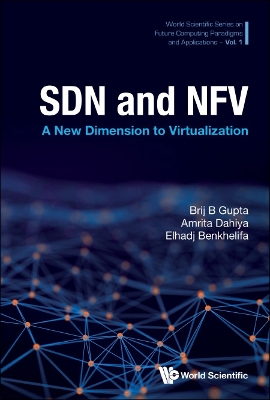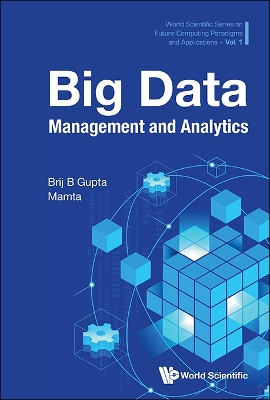World Scientific Series On Future Computing Paradigms And Applications
2 total works
Book 0
Sdn And Nfv: A New Dimension To Virtualization
by Brij B. Gupta, Amrita Dahiya, and Elhadj Benkhelifa
Published 16 February 2024
Software-defined network (SDN) and network function virtualization (NFV) are two technology trends that have revolutionized network management, particularly in highly distributed networks that are used in public, private, or hybrid cloud services. SDN and NFV technologies, when combined, simplify the deployment of network resources, lower capital and operating expenses, and offer greater network flexibility. The increasing usage of NFV is one of the primary factors that make SDN adoption attractive. The integration of these two technologies; SDN and NFV, offer a complementary service, with NFV delivering many of the real services controlled in an SDN. While SDN is focused on the control plane, NFV optimizes the actual network services that manage the data flows. Devices such as routers, firewalls, and VPN terminators are replaced with virtual devices that run on commodity hardware in NFV physical networking. This resembles the 'as-a-service' typical model of cloud services in many aspects. These virtual devices can be accessed on-demand by communication, network, or data center providers.This book illustrates the fundamentals and evolution of SDN and NFV and highlights how these two technologies can be integrated to solve traditional networking problems. In addition, it will focus on the utilization of SDN and NFV to enhance network security, which will open ways to integrate them with current technologies such as IoT, edge computing and blockchain, SDN-based network programmability, and current network orchestration technologies. The basics of SDN and NFV and associated issues, challenges, technological advancements along with advantages and risks of shifting networking paradigm towards SDN are also discussed. Detailed exercises within the book and corresponding solutions are available online as accompanying supplementary material.
Book 0
With the proliferation of information, big data management and analysis have become an indispensable part of any system to handle such amounts of data. The amount of data generated by the multitude of interconnected devices increases exponentially, making the storage and processing of these data a real challenge.Big data management and analytics have gained momentum in almost every industry, ranging from finance or healthcare. Big data can reveal key insights if handled and analyzed properly; it has great application potential to improve the working of any industry. This book covers the spectrum aspects of big data; from the preliminary level to specific case studies. It will help readers gain knowledge of the big data landscape.Highlights of the topics covered include description of the Big Data ecosystem; real-world instances of big data issues; how the Vs of Big Data (volume, velocity, variety, veracity, valence, and value) affect data collection, monitoring, storage, analysis, and reporting; structural process to get value out of Big Data and recognize the differences between a standard database management system and a big data management system.Readers will gain insights into choice of data models, data extraction, data integration to solve large data problems, data modelling using machine learning techniques, Spark's scalable machine learning techniques, modeling a big data problem into a graph database and performing scalable analytical operations over the graph and different tools and techniques for processing big data and its applications including in healthcare and finance.

